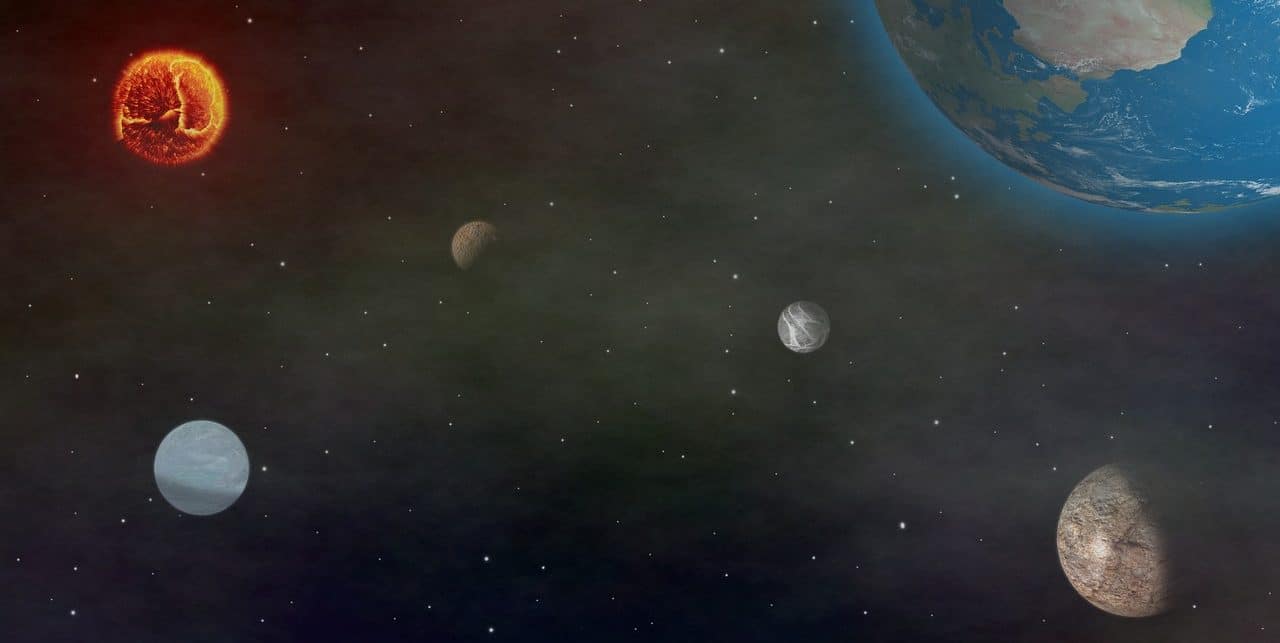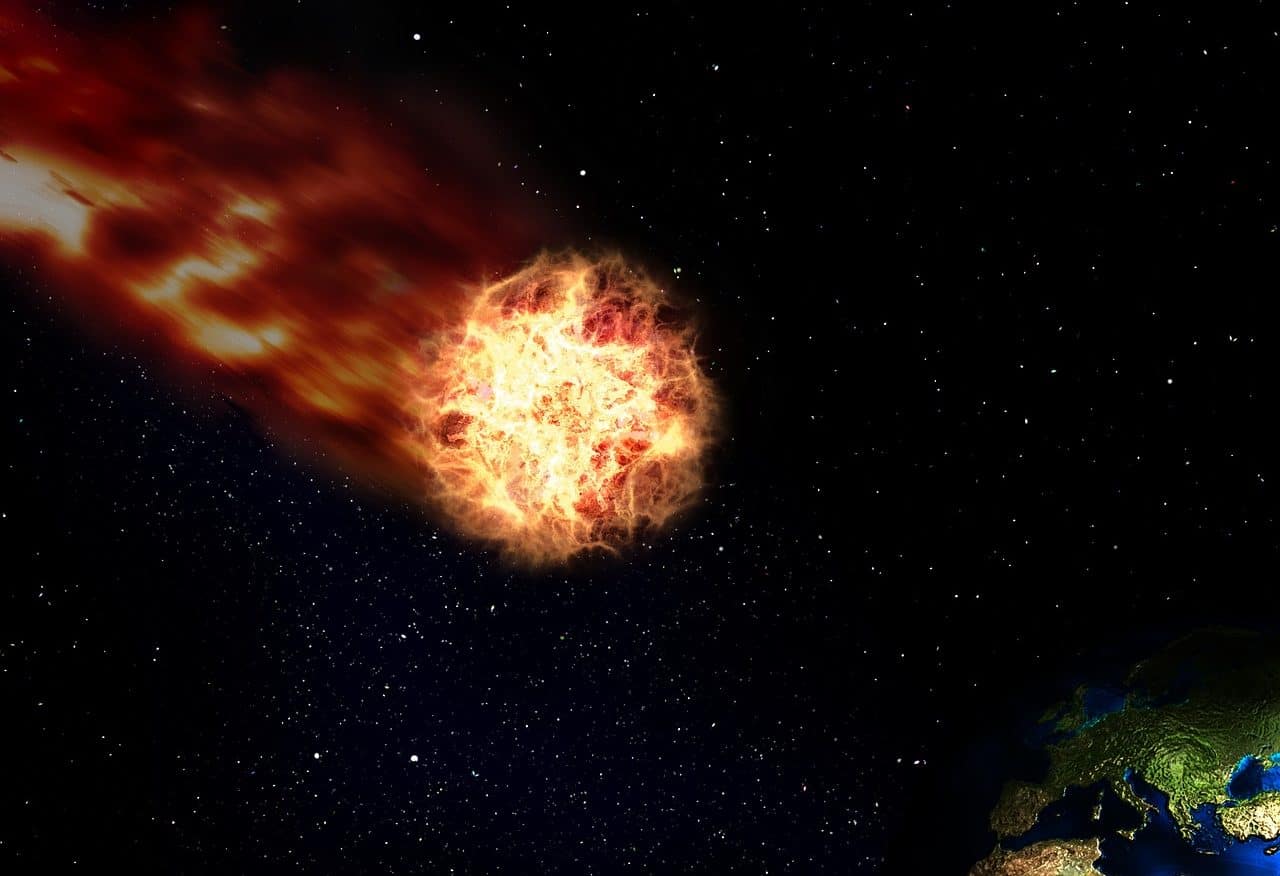
The Öpik-Oort cloud is located in interstellar space, specifically in the most distant portion of the solar system. For this reason, it is not influenced by the gravitational forces of the planets or the magnetic field of the sun.
The Öpik-Oort cloud is a formation with a spherical external appearance (and a toroidal internal appearance and popularly known as the Hills cloud ) that is located at the edge of the solar system .
It is made up of a huge number of trans-Neptunian objects and has been named after two prominent astronomers: Ernst Öpik (a student of meteoroids, asteroids, comets and other celestial bodies who came to maintain that, after the orbit of Pluto , comets existed). orbiting in the structure that would be named in his honor) and Jan Oort (a Dutchman who investigated the Milky Way in depth and also postulated that comets came from a special area, the cloud that would provide him with eternal recognition).
Origin and characteristics of the Öpik-Oort cloud
The studies linked to the origin and characteristics of the Öpik-Oort cloud are interesting.
It is believed, for example, that this formation dates back more than a billion years and that it emerged as a remnant or leftover of the protoplanetary disk formed around the sun. Not long ago it was determined that there is compatibility between the birth of this area and the hypothesis that the solar system emerged from a star cluster : if this conjecture is proven, perhaps the disturbances within the Öpik-Oort cloud are due to the influence of the first members of the stellar group.
It is not ruled out that the dispersed disk is the main source of origin of the elements grouped in this cloud , although further investigation is necessary. As knowledge related to it deepens, the Kuiper belt ( circumstellar disk that has similarities with the asteroid belt ) becomes relevant, establishing a comparison between the two from which similarities and differences are obtained.
Regarding its external shape, experts on the subject indicate that it is spherical due to the action of the galactic tide and the stellar gravitational interaction , factors that influence the orbits linked to comets. At the moment, however, there are no certainties regarding its mass : it is estimated that it would be five times that of the Earth , although there are scientific hesitations since there are those who maintain that its mass could be considerably less than estimated.

The solar system is a planetary system in which, for example, the sun, terrestrial planets such as Mars, Earth, Venus and Mercury and gas giant planets such as Saturn, Jupiter, Neptune and Uranus coexist.
Kites and other objects
The outer layer of the Oort cloud , rigorous assessments point out, is poorly linked to the sun and is conceived as the germ of the vast majority of long-period comets . This would not happen with short period comets , most of which come from the scattered disk or the Kuiper belt (although in the latter case the quantity is small due to the stability of the orbit). By escaping the dispersed disk and becoming subject to the gravitational power of outer planets , the comets transform into centaurs , which penetrate into the depths of the solar system and become part of the group of short-period comets . In this segment, a distinction is made between Halley-type comets (typical of the Oort cloud , originally being long-period comets that, in the phase prior to their destination within the inner solar system , were captured by the gravity of different giant planets ) and comets. of the branch of Jupiter (born, almost entirely, in the scattered disk ).
It is suspected that in the internal region of this structure there are many more elements and that the so-called Hills cloud is responsible for replenishing the outer fringe as the objects (some of them rocky) present in the Öpik cloud are depleted. Oort .
It is enriching to note that, beyond comets , two pairs of objects are considered part of it, among them the trans-Neptunian objects 2008 KV42 (whose orbit is retrograde) and 2006 SQ372 . Also included are 90377 Sedna (an object that, from the perspective of some astronomers, meets the conditions to be classified within the group of dwarf planets ) and 2000 CR105 (as is the case with Sedna , its perihelion distance is not under the gravitational power of Neptune ).

Comets, based on their characteristics, are classified as long-period comets (mostly originating from the Öpik-Oort cloud) and short-period comets (generally originating from the scattered disk or the Kuiper belt).
Nemesis hypothesis, close to the Öpik-Oort cloud
In 1984 , a group of researchers proposed the possibility of defining the solar system as a binary system . Nemesis was named after the hypothetical brown dwarf that would be the stellar companion, the twin sister, of our sun. Later the idea of classifying it as a black hole was validated and, after the 2000s , the possibility was exposed that there is a very distant giant planet responsible for many comets reaching the inner solar system emanating from a very specific area of the planet. Oort cloud .
The extinctions that, throughout History , have taken place on Earth were analyzed to, depending on their periodicity, support (or not) the theory of the binary essence of the solar system . If it really existed, Nemesis would pass through the aforementioned Oort cloud every 26 million years, generating in that context a large number of elements being fired with sufficient power to cause serious impacts.
